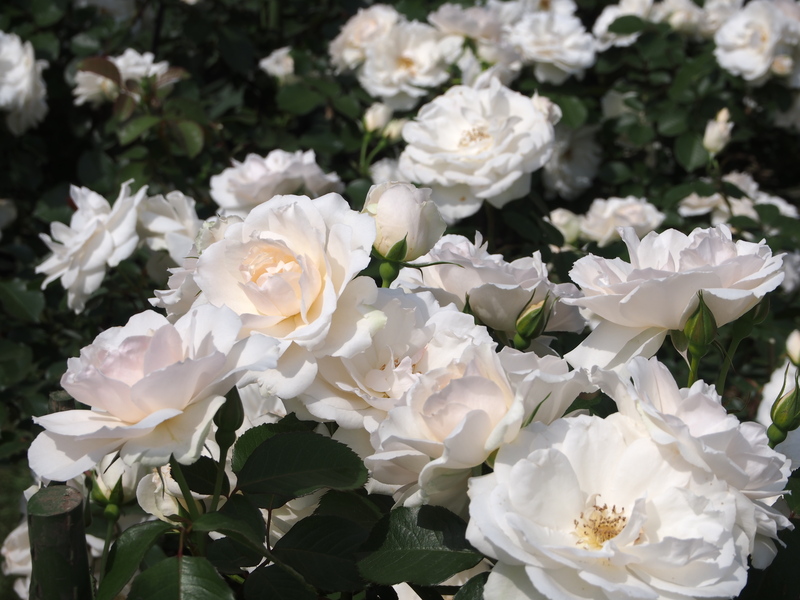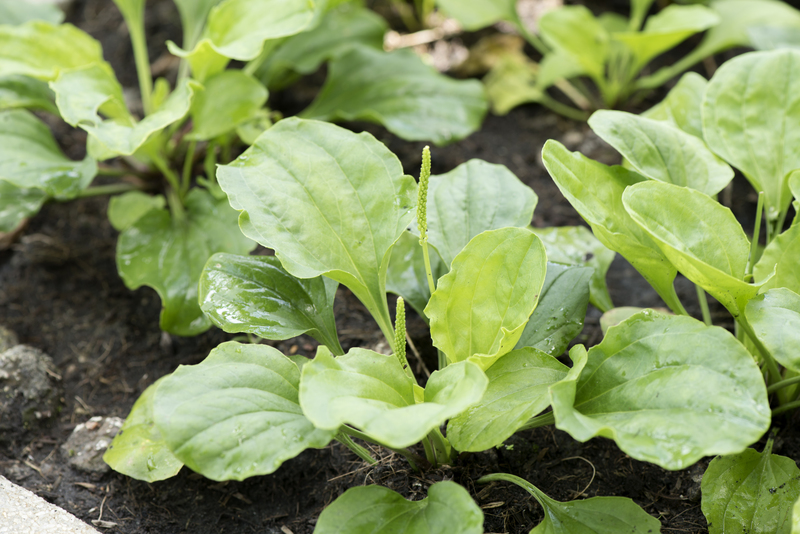Smooth transition into the world of container gardening
Posted on 26/06/2025
Smooth Transition Into the World of Container Gardening: A Complete Guide
Container gardening opens a gateway to cultivating lush greenery regardless of your living situation. Whether you're limited by space, striving for convenience, or simply charmed by the idea of portable plants, making a smooth transition into the world of container gardening can be incredibly rewarding. This comprehensive article unpacks everything you need to set the stage for a flourishing garden--right on your balcony, windowsill, or patio.
Why Shift to Container Gardening?
The transition into container gardening is both practical and creative. Here are some compelling reasons to embrace this style:
- Accessibility: No need for expansive yards--grow your favorites in small spaces.
- Flexibility: Shift, split, or cluster your plants as your aesthetics evolve.
- Control: Tailor soil, sunlight, and water to plant-specific needs much more easily than in-ground gardens.
- Pest Management: With mobility, you can minimize many common garden pests and diseases.
Adopting container gardening isn't merely a solution for spatial limitations. It enables a dynamic gardening experience, blending functionality with style while adding vitality to urban and suburban settings alike.

Understanding Container Gardening Basics
Getting a smooth start in container gardening requires a grasp of the core concepts. Let's break down what newcomers need to know:
The Right Containers: Material Matters
There's a wealth of choices for containers. Each type brings its pros and cons:
- Terracotta: Classic look, porous (aids drainage) but can dry out quickly and are breakable.
- Plastic: Lightweight, affordable, and retain moisture well.
- Ceramic/Glazed Pots: Visually stunning and hold moisture, though they're heavier and often pricier.
- Metal: Modern aesthetic, durable but can heat up in sunlight and affect root health.
- Wood: Rustic feel, good insulation, but can rot over time unless treated.
Tip: Ensure all containers have adequate drainage holes to prevent waterlogging!
Choosing the Right Soil for a Smooth Transition
Ordinary ground soil is rarely suitable for containers. Go for a high-quality potting mix--loose, lightweight, and developed specifically for potted plants. Such soil offers the right balance of aeration, drainage, and nutrient-holding capacity that's critical for healthy roots.
- All-purpose mixes work well for most flowers and foliage.
- Specialized blends: Use cactus/succulent mix for desert plants, or moisture-retentive soils for ferns and shade-lovers.
Avoid using plain garden soil, as it compacts easily and often harbors pests and diseases.
Plant Selection: What Grows Best in Containers?
Virtually any plant can be grown in a container with the right care. For a smooth transition, consider these easy starters:
- Herbs: Basil, mint, chives, parsley, oregano--compact, fast-growing, and useful in the kitchen.
- Leafy greens: Lettuce, spinach, arugula, kale.
- Annual flowers: Petunias, marigolds, impatiens, pansies.
- Small vegetables: Radishes, cherry tomatoes, peppers, bush beans.
- Dwarf fruit varieties: Strawberries, blueberries (in acidic soil), dwarf citrus trees.
Tip: Start with a few resilient plants to hone your container gardening skills before branching into more demanding species.
Planning Your Container Garden: Steps for a Smooth Transition
Now to bring your container garden to life! Dive into these steps and ensure your initiation into this world is as seamless as possible.
1. Assess Your Space: Sun, Shade, and Environmental Factors
Determine the amount of light your intended gardening space receives. Most vegetables, herbs, and flowering plants require at least 6 hours of sunlight daily. Shadier areas are ideal for ferns, impatiens, and certain foliage plants.
Consider wind exposure, accessibility to water sources, and how weather patterns affect your setting. Make adjustments as necessary--using wheeled plant stands or moveable planters--to ensure plant health and safety.
2. Select Containers and Layout
- Match plant size to pot size: Allow space for growth. Cramped roots mean stunted plants!
- Mix and match container sizes: Cluster smaller containers for visual interest or use large planters for dramatic centerpieces.
- Mobility: Consider lightweight pots if you want to move plants regularly, or invest in rolling platforms.
3. Fill with the Right Potting Mix
As previously mentioned, never skimp on soil quality. Fill containers up to 1-2 inches below the rim to allow for watering. Mix in slow-release fertilizer if desired, or plan for regular liquid feeding.
4. Sow or Transplant Your Plants
For seeds: Follow sowing depths on packets and thin seedlings as they grow.
For transplants: Gently loosen roots, place them at a similar depth as they were in their original pots, and backfill with additional potting mix.
5. Water Consistently for a Healthy Transition
Containers dry out faster than ground gardens. Check soil moisture daily during warm months. Water thoroughly until water drains from the bottom, but avoid leaving pots in standing water (unless growing aquatic plants).
6. Feed for Success
Plants in containers have limited access to nutrients. Start with a soil that contains fertilizer or begin a feeding routine after a few weeks. Liquid fertilizers work quickly, while slow-release pellets offer convenience.
Overcoming Common Challenges in Container Gardening
A smooth transition into container gardening involves learning how to tackle and avoid pitfalls:
- Poor drainage: Always check for and maintain open drain holes.
- Under/overwatering: Learn the water needs for each plant; use self-watering pots if you tend to forget.
- Pests: Monitor regularly for aphids, spider mites, and fungal diseases. Neem oil or insecticidal soap can be lifesavers.
- Nutrient deficiencies: Watch for yellowing leaves or slow growth, and adjust fertilizing routines accordingly.
Creative Ideas to Enhance Your Container Garden Transition
Container gardening is as much about creativity as functionality! Here are some inspiring ideas for your journey:
- Vertical gardening: Use hanging baskets, wall-mounted shelves, or stackable pots for space-saving beauty.
- Themed groupings: Try a culinary garden with herbs and veggies, or a butterfly/pollinator set to attract beneficial wildlife.
- Repurposed materials: Convert old buckets, boots, wheelbarrows, or crates into quirky, personalized planters.
- Color coordination: Harmonize flowers and foliage colors with your home's decor scheme for aesthetic unity.
- Seasonal displays: Rotate plantings for spring blooms, summer edibles, autumn foliage, and winter evergreens.
With a bit of imagination, your pots and planters become living works of art--transforming patios, balconies, and doorways into vibrant, green havens.
Long-Term Care for a Sustainable Transition
Sustaining your success in container gardening requires ongoing attention. Here's how to nurture your plants and enjoy a thriving display year-round:
- Regular inspection: Check for pests, diseases, or signs of distress at least once a week.
- Repotting: Most plants will outgrow their containers eventually. Repot to a larger size--ideally in early spring--for continued growth.
- Rotate for even growth: Turn containers occasionally to ensure all sides receive sunlight, preventing leaning and uneven development.
- Winter care: Some plants require indoor shelter during cold weather. Plan ahead for the growing zone in your region.

Expert Tips for an Effortless Move into Container Gardening
- Start small: Don't overwhelm yourself. Begin with a handful of pots and favorite plants, then expand as confidence grows.
- Use quality tools: Invest in long-lasting hand trowels, watering cans, and lightweight potting soil.
- Label plants: Especially when growing from seed, plant markers help keep track of varieties and care instructions.
- Network: Join online forums or local clubs focused on container gardening for shared knowledge and inspiration.
- Document progress: Take photos and notes--observing successes and learning from any setbacks along your journey into container gardening.
Smooth Transition Into Container Gardening: Your Green Future Awaits
Embarking on your journey into container gardening is an empowering step toward greener, more fulfilling living. By focusing on the smooth transition into the world of container gardening, you can nurture beautiful, productive plants through every season with confidence--regardless of experience or available space.
With a blend of patience, observation, and creativity, your pots and planters will soon overflow with life, color, and joy. Welcome to the world of container gardening--may your hands stay muddy and your heart always green!
Frequently Asked Questions About Starting Container Gardening
- Is container gardening suitable for total beginners?
Absolutely. Start with easy-care plants and expand as you gain confidence. - How often should I water my containers?
This depends on the plant, container size, weather, and soil. Generally, water when the top inch of soil feels dry. - What is the best container size for vegetables?
Leafy greens do well in 6-8 inch pots, while tomatoes, peppers, and larger vegetables may need 12-18 inches or more. - Can I grow perennials or trees in containers?
Yes! Use large pots and be mindful of long-term soil health and root space.
Ready for your smooth transition into the world of container gardening? Grab your pots, pick your plants, and let your garden dreams take root--no backyard required!

